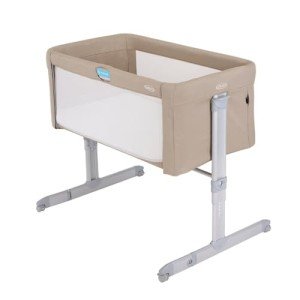Understanding Co-Sleeper Cribs: A Comprehensive Guide for New Parents
In the ever-evolving landscape of infant sleep services, co-sleeper cribs have garnered considerable attention amongst new parents. These specialized cribs use a special bridge between co-sleeping and safe sleep practices, supplying benefits that resonate with both caretakers and infants. This article explores the complexities of co-sleeper cribs, detailing their features, benefits, considerations, and responding to typical questions to direct parents in making an informed decision.
What is a Co-Sleeper Crib?
A co-sleeper crib, also referred to as a bedside sleeper, is a type of crib developed to safely connect or sit beside an adult bed. It enables infants to sleep near their parents without the dangers typically associated with adult bed-sharing. These cribs come in different designs, however many share an essential function: one side that is lower, enabling easy reach to the baby while keeping them in their own designated sleeping space.
Secret Features of Co-Sleeper Cribs
- Safe Attachment: Designed to safely connect to the adult bed, ensuring stability.
- Adjustable Height: Height modification options for smooth positioning next to the adult mattress.
- Breathable Mesh Sides: Often geared up with breathable mesh sides to improve air flow.
- Compact Design: Takes up less space than traditional cribs, making them perfect for small spaces.
- Portable Options: Many co-sleeper cribs are light-weight or foldable, permitting easy movement and travel.
Advantages of Using a Co-Sleeper Crib
Co-sleeper cribs present numerous benefits that appeal to new parents, consisting of:
- Enhanced Bonding: Proximity promotes bonding and can relieve nighttime feedings and comforting.
- Streamlined Nighttime Feeding: Parents can quickly feed or soothe their baby without requiring to get out of bed.
- Minimized Risk of Bed-Sharing Hazards: Co-sleepers create a more secure environment than standard bed-sharing, lowering the risk of suffocation and falls.
- Support of Independent Sleep: Infants have their own sleep space, which promotes independent sleeping routines.
Considerations When Choosing a Co-Sleeper Crib
While co-sleeper cribs use lots of benefits, there are likewise a number of factors to consider that parents should evaluate before buying:
- Safety Standards: Always guarantee that the crib complies with current security policies supplied by companies such as the Consumer Product Safety Commission (CPSC).
- Size Compatibility: Measure the adult bed to ensure the co-sleeper will fit firmly and comfortably alongside it.
- Ease of Use: Look for models that help with easy operation and ease of access, especially throughout nighttime.
- Convertible Options: Some co-sleepers use the flexibility to convert into a standard crib once the child outgrows them, which can be an affordable choice.
Leading Co-Sleeper Cribs on the marketplace
To help navigate the abundance of alternatives available, here's a table showcasing some popular co-sleeper cribs along with their standout functions:
| Brand | Model | Features | Price Range |
|---|---|---|---|
| Arm's Reach | Ideal Arc Crib | Adjustable height, detachable side | ₤ 150 - ₤ 230 |
| Babybay | Initial Co-Sleeper | Made from sustainable wood, consists of bed mattress | ₤ 240 - ₤ 300 |
| Chicco | Next2Me Magic | Easy side access, collapsible design | ₤ 200 - ₤ 280 |
| Cuddle Me | Organic Co-Sleeper | Soft, comfortable contours; portable | ₤ 120 - ₤ 180 |
| HALO | BassiNest | 360-degree rotating, height-adjustable | ₤ 250 - ₤ 350 |
Tips for Using a Co-Sleeper Crib
- Positioning: Place the co-sleeper beside the bed at the very same height level for safety.
- Follow Safe Sleep Practices: Ensure the crib is established according to standards to minimize dangers. This consists of avoiding loose bedding and keeping the mattress firm.
- Regularly Check Security: Periodically check the attachment between the co-sleeper and the adult bed to guarantee it stays protected and steady.
Regularly Asked Questions (FAQs)
1. Are co-sleeper cribs safe?Yes, when
used according to the manufacturer's guidelines and security standards, co-sleeper cribs are considered a safe option to standard bed-sharing.
2. The length of time can my baby use a co-sleeper crib?Most co-sleeper cribs are created for infants up to 5-6 months old, but check specific product specifications for age and weight limits. 3. Do co-sleeper cribs include mattresses?Many co-sleeper cribs feature consisted of mattresses, but verify this before purchase. Ensure any extra bed mattress meets safety standards. 4. Can a co-sleeper crib be used for twins?There are co-sleeper cribs developed for twins, however these models may be less typical. Constantly examine official source and weight limitations. 5. Must I use a co-sleeper crib for naps?Absolutely! Co-sleepers work well for both nighttime sleeping and naps, providing a consistent sleep environment for infants. Co-sleeper cribs use an efficient and safe compromise
for new parents excited to keep their infant close while maintaining a protected sleeping environment. By comprehending their functions, advantages, and
security considerations, parents can make informed decisions that cater to their household's requirements. Whether you're looking for convenience throughout nighttime feedings or a way to construct a strong early bond, a co-sleeper crib might simply be the right option for you and your youngster.

